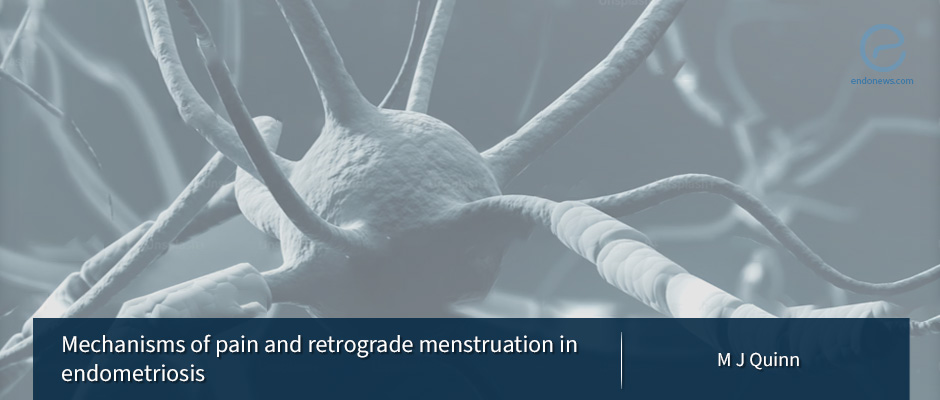Chronic pelvic pain mechanisms in endometriosis
Jun 26, 2024
A commentary on the mechanisms contributing to pelvic pain in endometriosis is shared in editorial
Key Points
Highlight
- Chronic pelvic pain in teenage girls may stem significantly from denervation-reinnervation injuries caused by prolonged physical efforts during defecation.
Importance
- Clarifying symptom assessment, particularly regarding "straining on the toilet," is crucial for accurately understanding pelvic health issues in young women.
What's Done Here
- This is an editorial piece in which Dr. Quinn comments on an editorial discussing findings from a study by Gete et al. on symptoms associated with endometriosis, particularly focusing on chronic pelvic pain and its underlying mechanisms.
Key Results
- The study by Gete et al. successfully quantifies 24 different symptoms linked to endometriosis
- The potential role of isthmic and interstitial uterine denervation and subsequent reinnervation in explaining many of the symptoms, exacerbated by factors like difficult labor and gynecologic surgery is questioned.
Lay Summary
M. J. Quinn from Shanghai, China wrote an editorial piece in the latest issue of the American Journal of Obstetrics & Gynecology commenting on an article by Gete et al. in which they shared the findings from the Australian Longitudinal Study on Women’s Health, published in American Journal of Obstetrics & Gynecology.
Dr Gete et al. showed that women with endometriosis had an adjusted odds ratio of 1.67 for constipation and Dr Quinn commented that this rate would be much higher if teenage girls with symptoms of chronic pelvic pain were to be included in the study as almost 1/3 of the urban Western population suffer from serious denervation-reinnervation injuries.
Dr.Quinn added that when asking about the symptom of “straining on the toilet”, the use of different wording would help the women answer this question more easily. He stated that chronic pelvic pain in this particular population is predominantly attributed to “prolonged and coordinated physical efforts during defecation, resulting in denervation and subsequent abnormal reinnervation in pelvic organs like the cervix and uterosacral ligaments”. This condition manifests laparoscopically with thickened uterosacral ligaments, rectovaginal fusion, and extensive adhesions as characteristic phenotypes.
Adding that he found the study very helpful in regards to quantifying the 24 different symptoms associated with endometriosis, he concludes by questioning whether the authors agree that isthmic and interstitial uterine denervation, followed by reinnervation due to factors like straining on the toilet, difficult labor, or gynecologic surgery, along with their secondary consequences and opportunistic infections, could reasonably explain many of these symptoms.
Research Source: https://pubmed.ncbi.nlm.nih.gov/38777164/
endometriosis pelvic pain innervation

